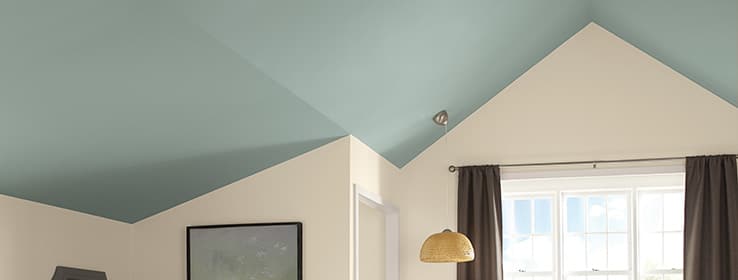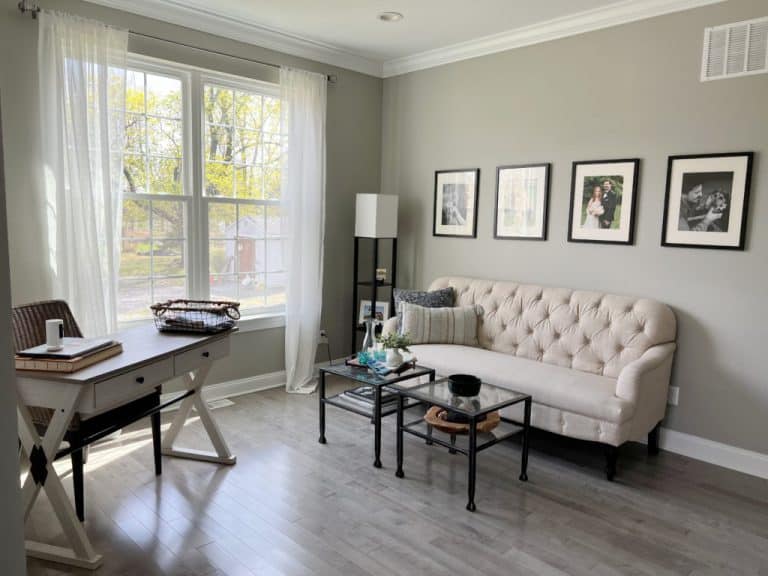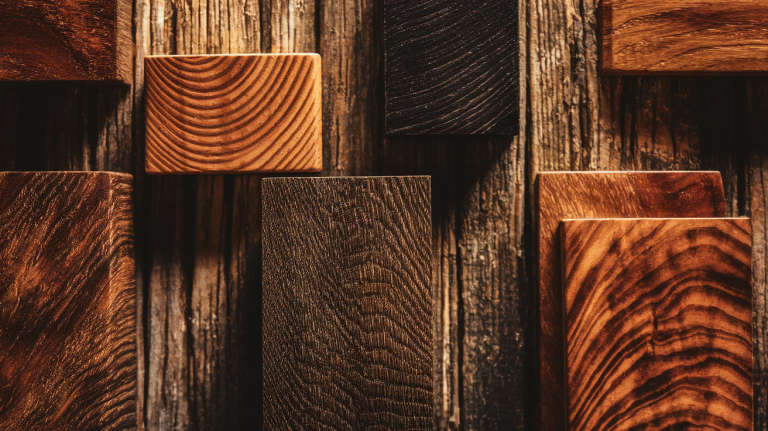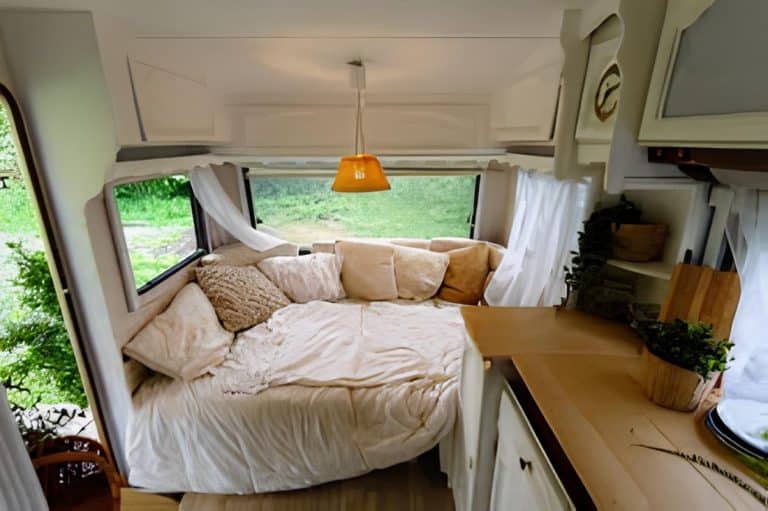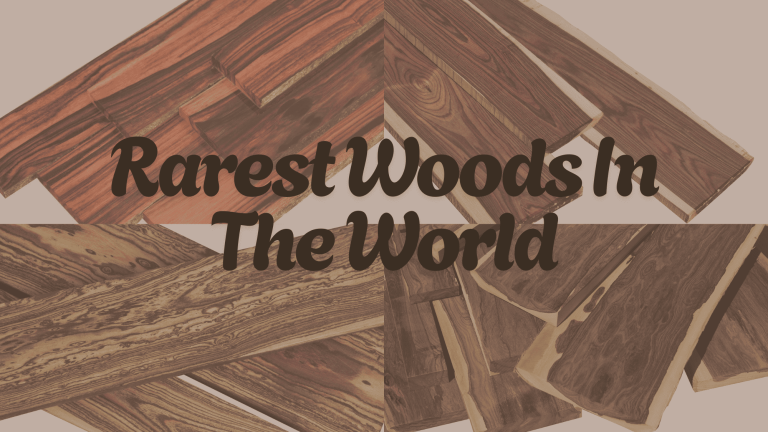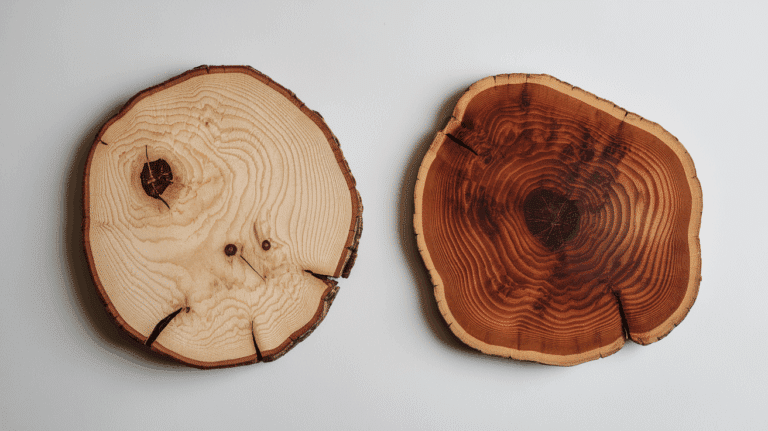Snowbound (SW 7004) vs Alabaster (SW 7008): Paint Review
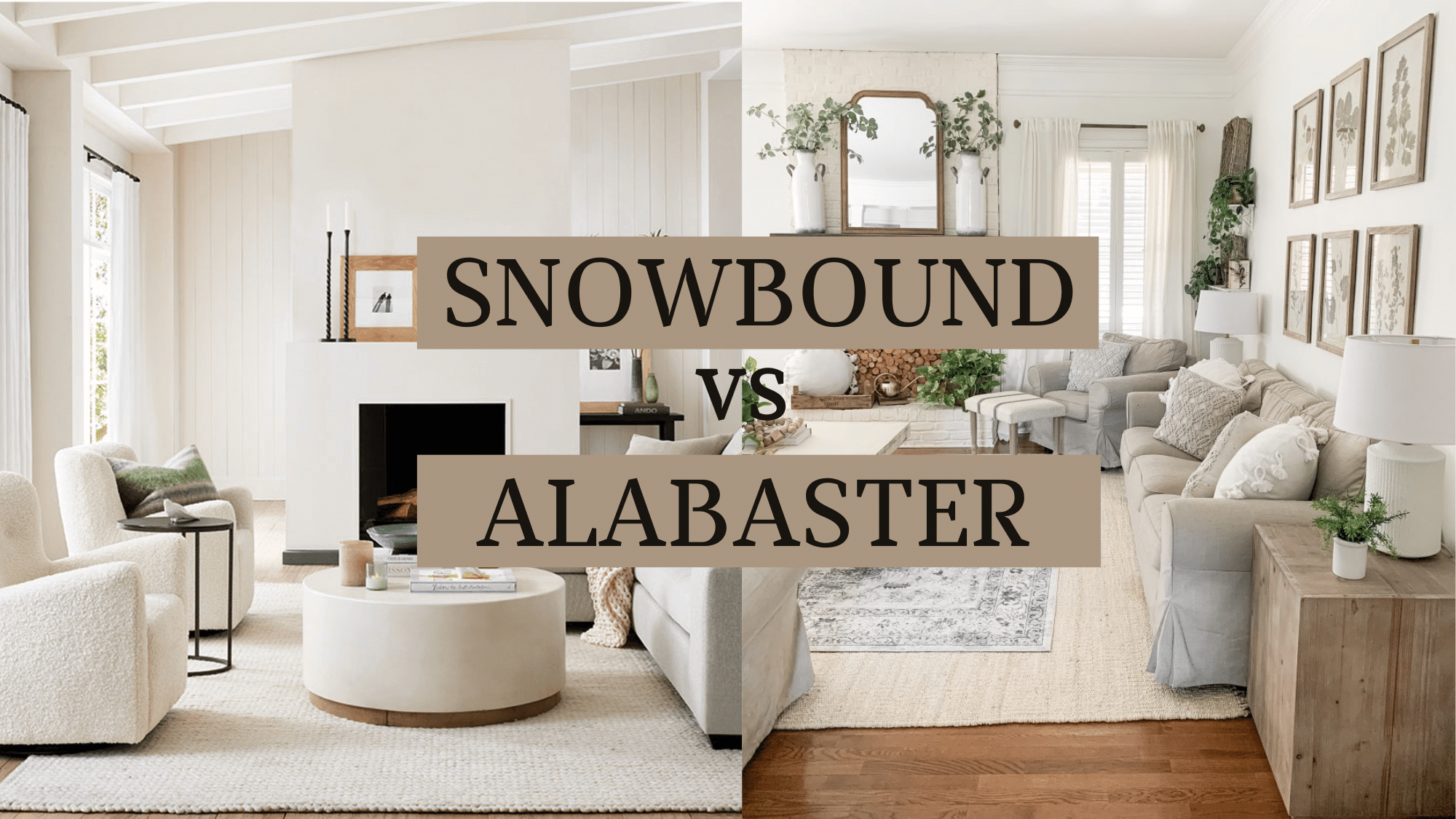
Are you puzzled by which crisp white paint to choose?
Sherwin-Williams Snowbound and Alabaster stand as top contenders, each offering distinct characteristics despite their similar appearance.
This comparison examines their undertones, reflectivity, coverage quality, and real-world applications across various lighting conditions and spaces.
Understanding these differences will help you select the perfect white paint for your specific needs, renovating your walls into the ideal canvas for your home’s unique story.
Ready to make your decision? Let’s check these popular whites.
Understanding Snowbound vs Alabaster Colors
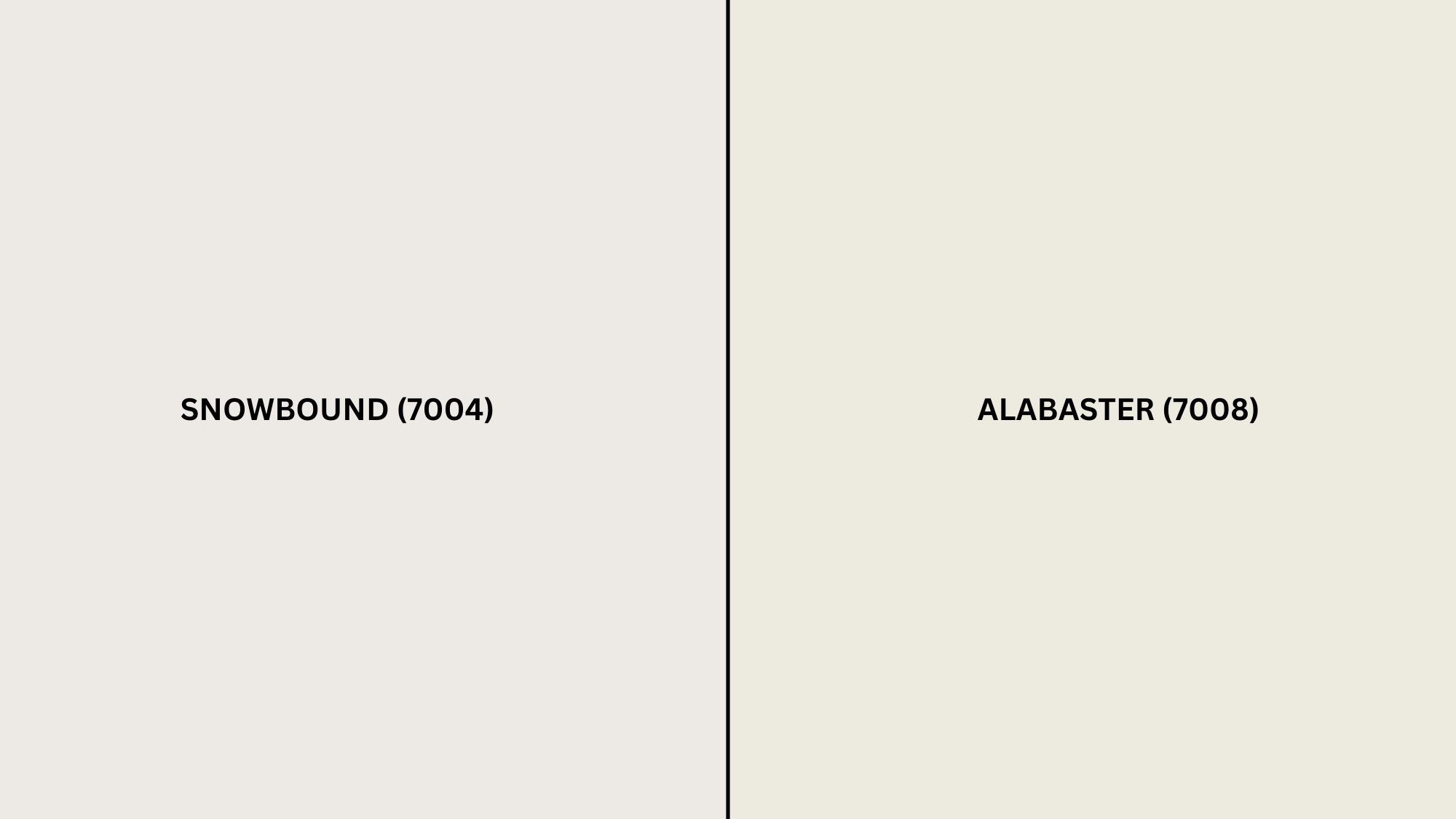
Choosing between whites can significantly impact the look of your home. These two popular Sherwin-Williams whites offer distinct personalities that shine in different settings and lighting conditions. Let’s have a look at both colors.
Snowbound (SW 7004)
Snowbound is a soft, bright white with subtle gray undertones that give it a slightly cooler appearance. It maintains its crispness in most lighting conditions while avoiding the stark, clinical feel of pure whites.
This neutral color creates a clean, modern aesthetic that works beautifully in contemporary spaces, appearing more gray in north-facing rooms and more purely white in spaces with abundant natural light.
Alabaster (SW 7008)
Alabaster is a warm, creamy white with gentle yellow undertones, creating a soft and inviting feel. It’s slightly more muted than Snowbound, offering a timeless appearance that suits any space.
This versatile neutral adapts beautifully to various lighting situations, assuming a cozier, more ivory appearance in warm light while retaining its white character in cooler light, without appearing cold or stark.
Comparison of Color Terminology
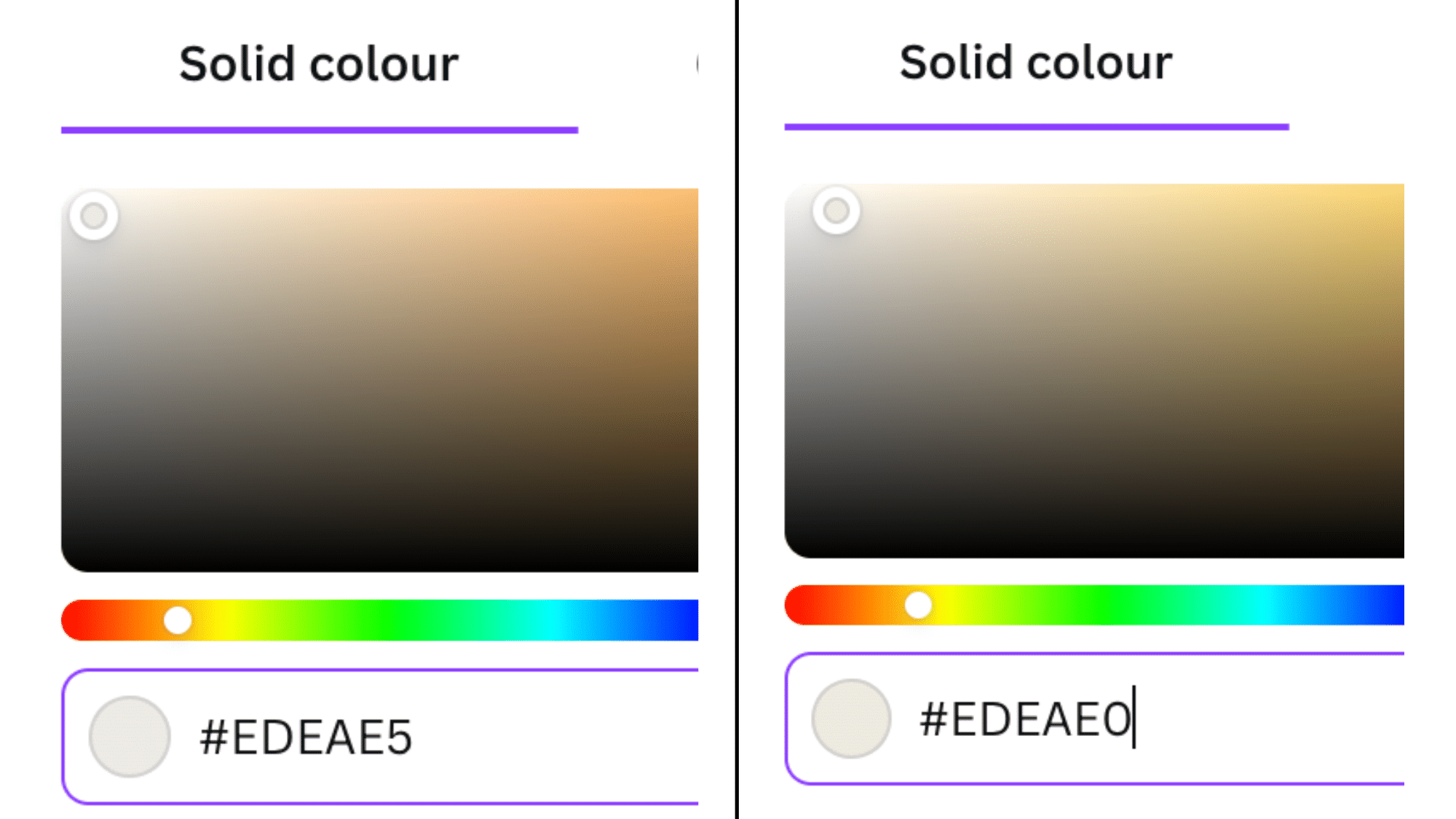
| Aspect | Snowbound (SW 7004) | Alabaster (SW 7008) |
|---|---|---|
| LRV (Light Reflectance Value) | 83 | 82 |
|
Color Category |
Cool white with slight gray undertones | Warm white with soft creamy undertones |
|
Comparison |
Pure white: ~90 LRV, Black: ~0 LRV | Pure white: ~90 LRV, Black: ~0 LRV |
|
RGB Value |
Red: 237, Green: 234, Blue: 229 | Red: 237, Green: 234, Blue: 224 |
|
Hex Code |
#EDEAE5 | #EDEAE0 |
|
Undertones |
Subtle gray with a hint of warmth | Soft beige and creamy warmth |
Interior Designs: Snowbound vs Alabaster
Both Sherwin-Williams whites bring unique qualities to different spaces in your home. Here’s how they perform in specific rooms:
Bedroom
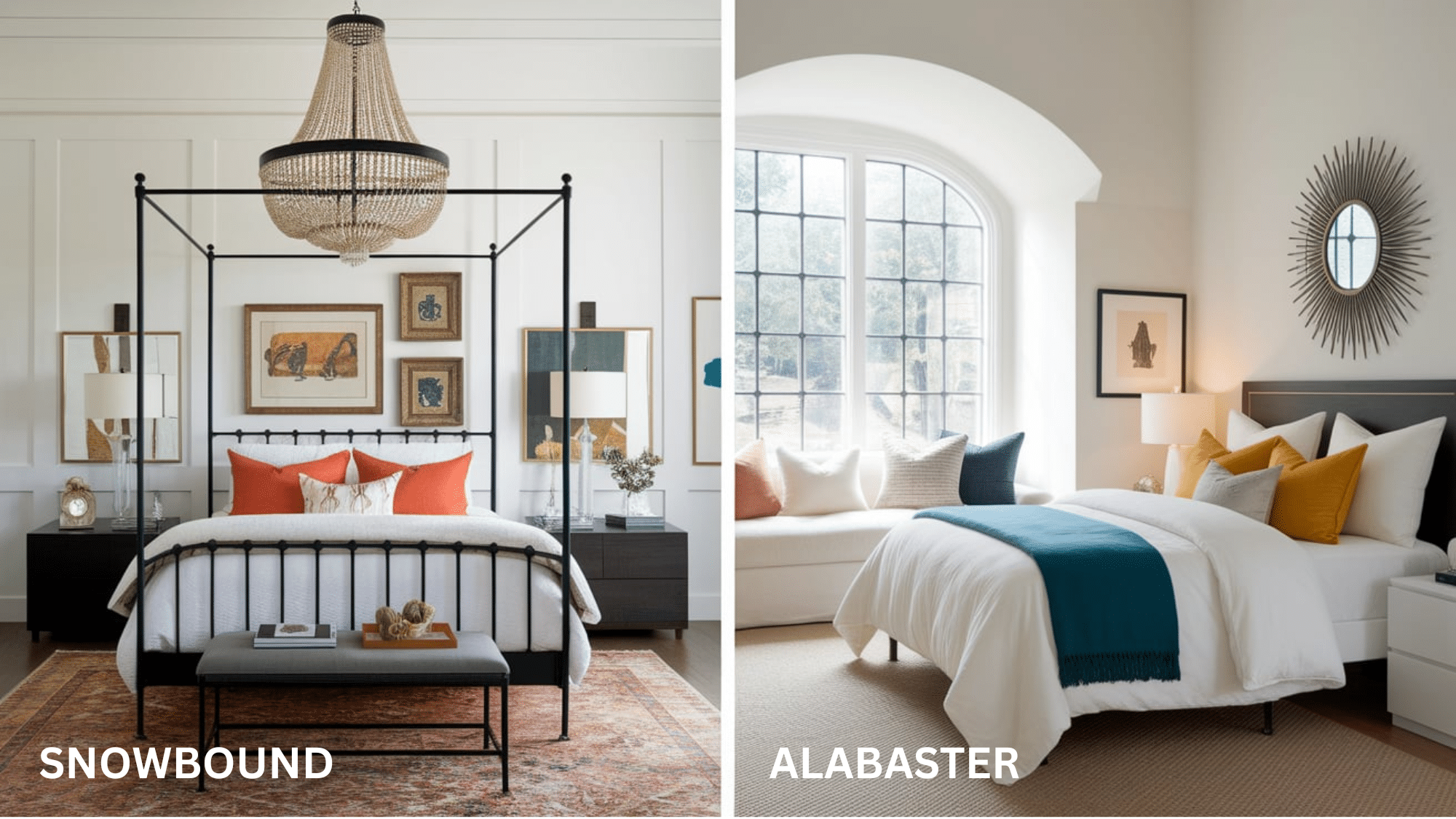
- Snowbound: Its cooler undertones create a clean, serene sanctuary, and it pairs beautifully with navy, gray, or silver accents for a contemporary feel.
- Alabaster: It transforms bedrooms into warm, cozy havens. Its creamy undertones make it especially flattering in bedrooms with limited natural light.
Bathroom
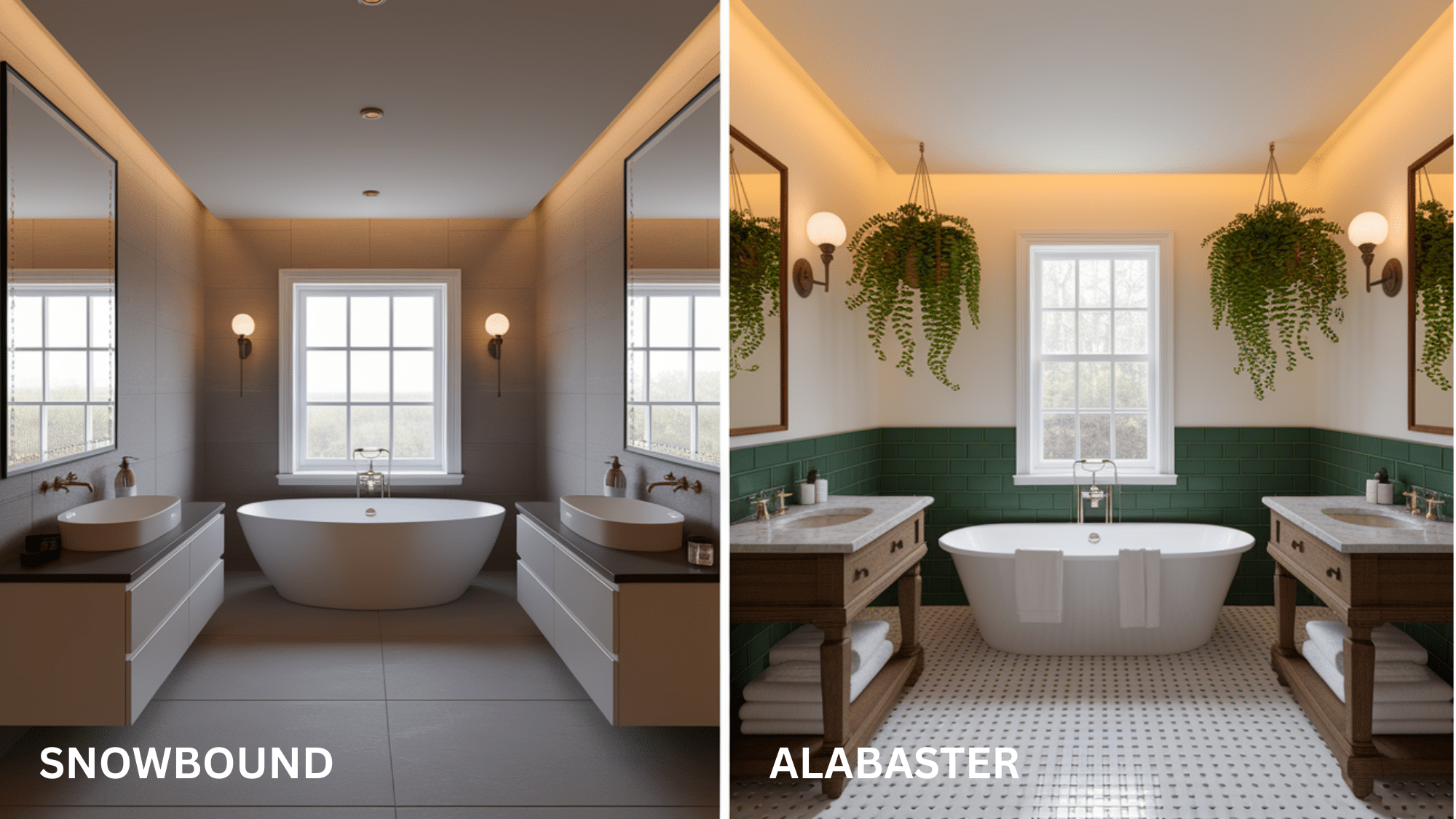
- Snowbound: This delivers a bright, spa-like bathroom experience. Its cooler profile complements chrome fixtures, marble surfaces, and blue-toned tiles.
- Alabaster: Brings a softer, more relaxing quality to bathrooms that particularly shines with brushed gold or brass fixtures and warm-toned tiles.
Kitchen
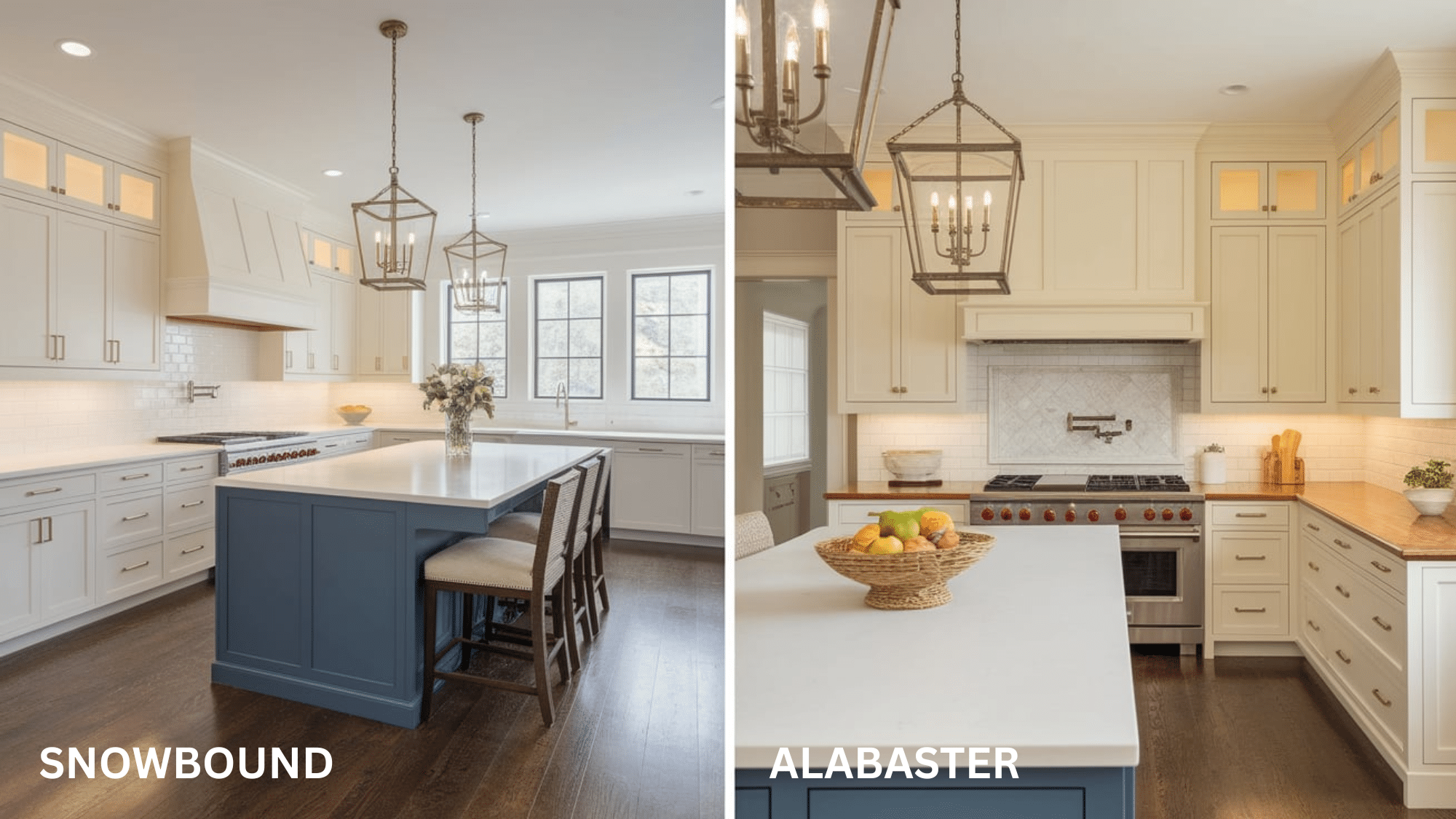
- Snowbound: Offers a clean, fresh canvas for kitchens that makes the perfect backdrop for both colorful and neutral cabinetry.
- Alabaster: Creates an inviting, timeless kitchen atmosphere. It particularly complements natural wood cabinets and traditional design elements.
Living Room
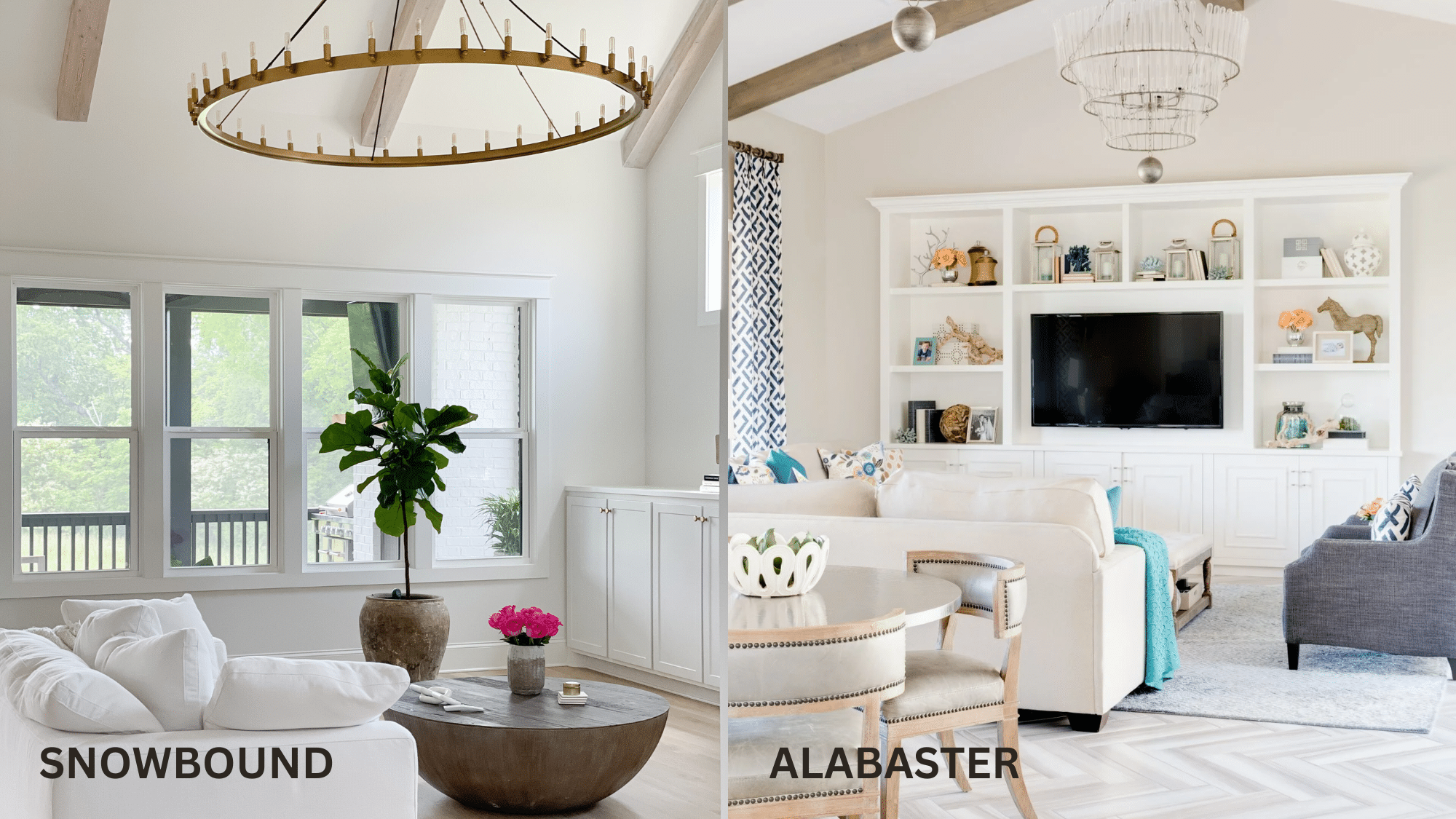
- Snowbound: Establishes a bright, airy foundation for living spaces. It works exceptionally well with bold accent colors or contemporary furnishings.
- Alabaster: Develops a warm, welcoming living room environment that provides the perfect neutral backdrop for layering textures and creating depth.
Exterior
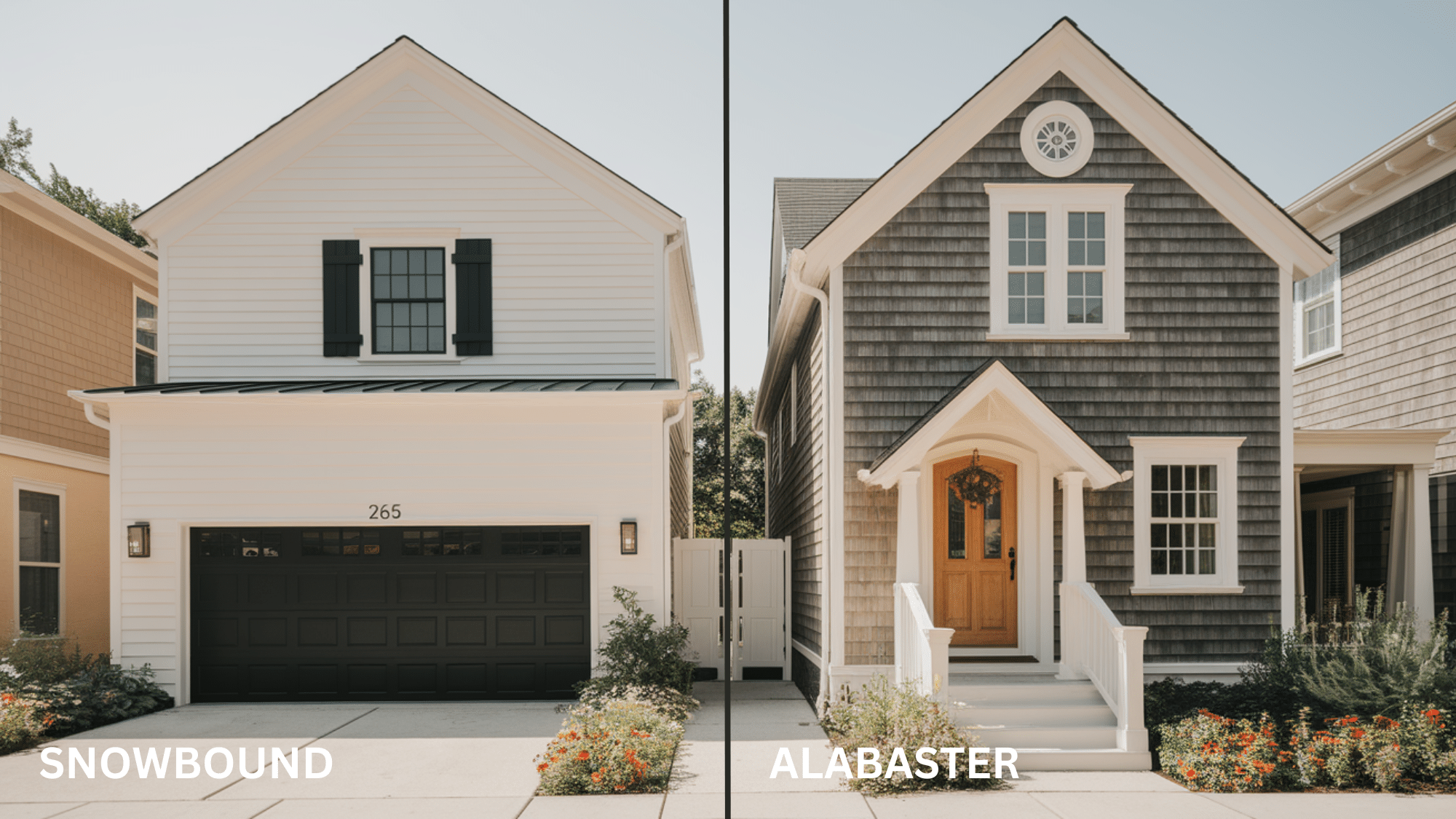
- Snowbound: This delivers a crisp, classic exterior that stands out sharply against landscaping. It’s effective on modern styles with dark trim for contrast.
- Alabaster: Creates a softer, more traditional exterior presence. It complements natural stone elements and warmer exterior materials.
Similarities and Dissimilarities
| Feature | Snowbound (SW 7004) | Alabaster (SW 7008) |
|---|---|---|
|
Color Family |
Cool off-white | Warm off-white |
| Appearance in Bright Light | Crisp and clean, leans slightly cool | Soft, warm, and creamy |
|
Appearance in Low Light |
Can appear starker and slightly gray | Feels warmer and cozier |
|
Best For |
Modern, minimalist spaces | Cozy, traditional, and farmhouse styles |
| Versatility | Works well with cool grays and crisp whites | Pairs beautifully with warm neutrals and greiges |
|
Overall Tone |
Cool, crisp, and contemporary | Soft, warm, and inviting |
Snowbound vs Alabaster: Which Paint to Prefer
Choosing between Snowbound and Alabaster depends on your space’s lighting and desired feel. Here’s a clear guide to help you determine which paint works best in various conditions.
Choose Snowbound if You:
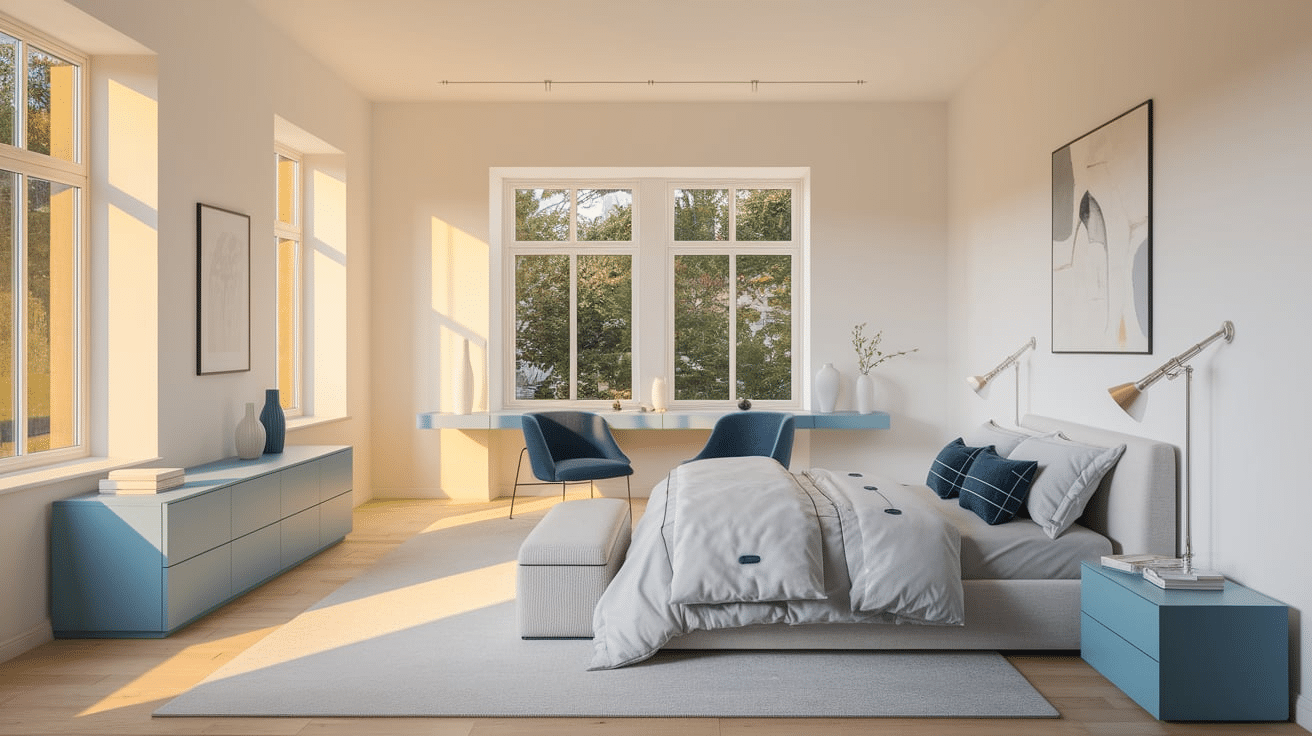
- Prefer a more contemporary, clean aesthetic
- Have spaces with cooler design elements (blues, grays)
- Want a brighter, more reflective white
- Need to make smaller spaces feel larger and more open
Choose Alabaster if You:
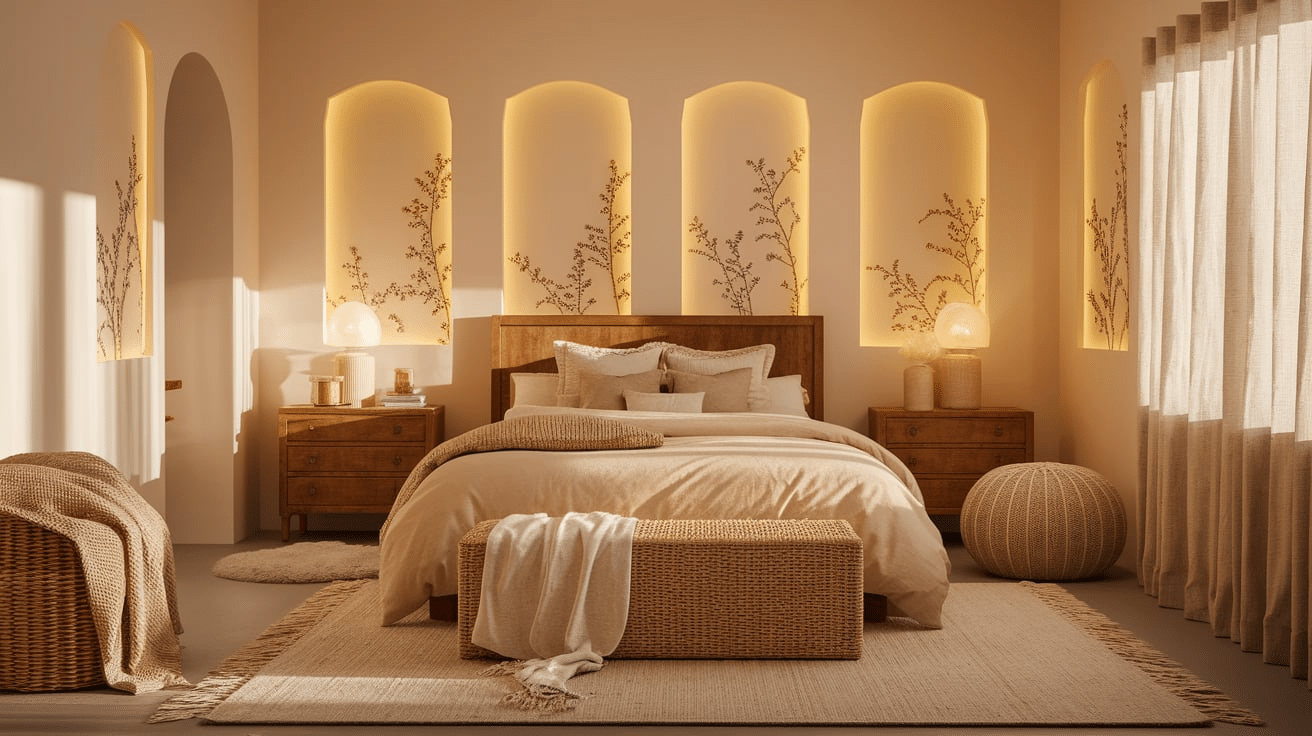
- Love warmer, cozier environments
- Have spaces with warm design elements (wood tones, beiges)
- Want to avoid any potential coolness in north-facing rooms
- Prefer a soft, timeless look that feels less stark
The best way to decide is to test both in your space at different times of day, as your unique lighting conditions will ultimately determine how each performs in your home
Can You Use Snowbound and Alabaster in the Same Home
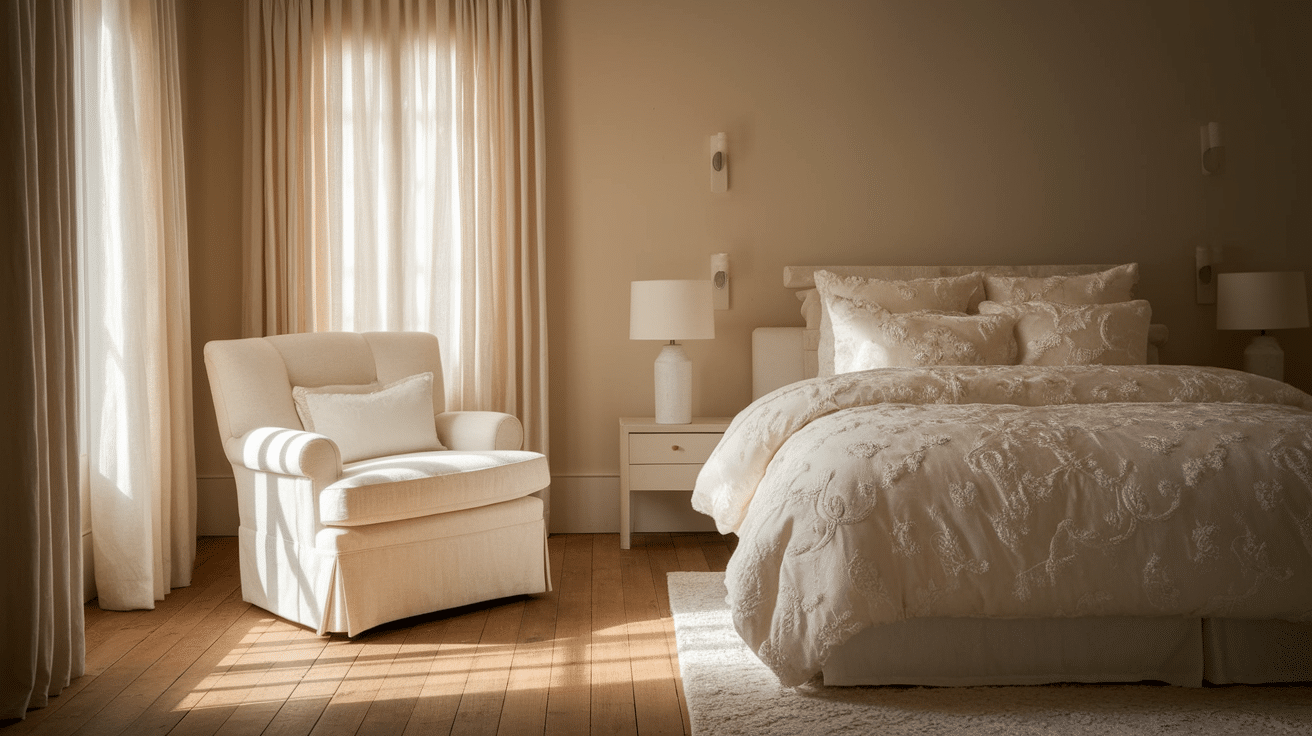
Yes, you can absolutely use both Snowbound and Alabaster in the same home, but their successful pairing requires thoughtful placement.
These two whites, while similar, have distinct undertones that can create either harmony or discord depending on how they’re used.
Effective Pairing Strategies
- Zone by Lighting Conditions: Use cooler Snowbound in south-facing rooms that receive abundant warm light, while placing warmer Alabaster in north-facing spaces that tend to feel cooler.
- Separate by Floor: Create subtle transitions by using Snowbound in main living areas for a bright, airy feel, with Alabaster in bedrooms for a softer, more relaxing atmosphere.
- Distinguish by Surface: Apply Snowbound to walls for a clean backdrop, and use creamier Alabaster on trim and cabinetry to add subtle dimension, or vice versa.
- Connect with Transitional Spaces: Use hallways and stairwells as natural breaking points between the two colors, allowing each to exist in its own zone.
The key is intentional placement rather than random mixing. When thoughtfully applied, these two whites can complement each other beautifully, creating subtle depth and interest throughout your home while maintaining a cohesive overall look.
Mistakes to Avoid
Using Sherwin-Williams Alabaster and Snowbound together in one room can create beautiful dimension, but several common pitfalls can compromise your results:
1. Mixing Without Purpose
Randomly applying both whites without a clear design intention creates a disjointed look. Always have a specific plan for how they’ll interact, like using one for walls and the other for trim or architectural features.
Consider creating a purposeful focal point with one color while using the other as a supporting element. This deliberate approach ensures the two whites complement rather than compete with each other.
2. Ignoring Undertone Conflicts
Placing them side by side on the same plane can highlight their different undertones (Alabaster’s warmth versus Snowbound’s coolness), making one appear dingy. Maintain separation or use transitional elements.
Try adding a third complementary neutral that bridges these whites, such as a soft beige that contains both warm and cool notes, helping to harmonize the transition between Alabaster and Snowbound.
3. Forgetting Lighting Variables
These whites change dramatically as light changes throughout the day. What looks better in morning light might clash in evening light.
Install lighting that can be adjusted to maintain consistency throughout the day. Consider adding dimmable warm-temperature bulbs to balance the cooler afternoon light and keep your white pairing looking intentional at all hours.
4. Neglecting Testing
Skipping large-scale test patches leads to disappointment. Always view substantial samples of both colors in your specific lighting conditions before making a commitment.
Observe your test patches at various times for at least 48 hours before making a decision. Take photos at different times of day to compare how the relationship between the two whites evolves with changing light conditions.
5. Creating Awkward Transitions
Abrupt changes between the two whites can look like mistakes rather than intentional design. Use architectural elements, such as corners, moldings, or furniture breaks, to create natural separation points.
Consider using decorative elements, such as artwork or textiles, that add both warm and cool tones to visually connect the two whites where they meet, creating a more intentional and cohesive look.
Wrapping it Up
After thorough comparison, both of these popular Sherwin-Williams whites offer exceptional quality and versatility for different spaces.
Snowbound provides a crisp, slightly cooler white with subtle gray undertones, perfect for modern aesthetics and spaces with abundant natural light.
Alabaster offers a warmer, softer white with gentle cream undertones, creating an inviting feel. It excels in traditional homes and spaces where starkness should be avoided.
The final choice depends on specific lighting conditions and desired vibe. Testing both colors on multiple walls is recommended before making a final decision.
For best results, obtain sample pots of both Snowbound and Alabaster to determine which one best complements the existing space and desired look.

